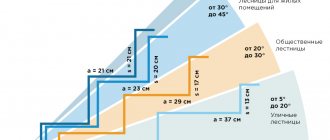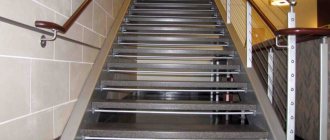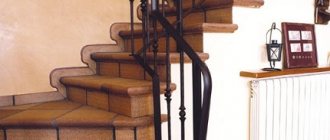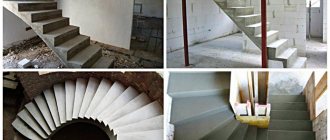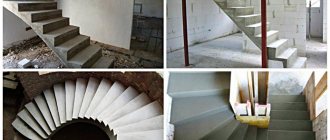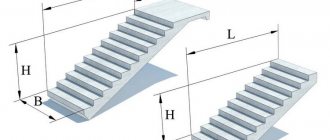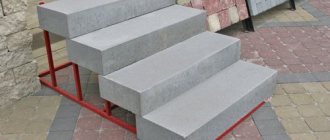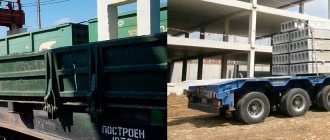GOST 1759.0 Bolts, screws, studs and nuts. Specifications
The goals, basic principles and general rules for carrying out work on interstate standardization are established by GOST 1.0 “Interstate standardization system. Basic provisions" and GOST 1.2 "Interstate standardization system. Interstate standards, rules and recommendations for interstate standardization. Rules for development, acceptance, updating and cancellation"
Standard information
1 DEVELOPED by the Closed Joint Stock Company "Central Order of the Red Banner of Labor Research and Design Institute of Building Metal Structures named after N.P. Melnikov" (CJSC "TsNIIPSK named after N.P. Melnikov")
2 INTRODUCED by the Technical Committee for Standardization TC 465 “Construction”
3 ADOPTED by the Interstate Council for Standardization, Metrology and Certification (protocol dated June 28, 2016 N 49)
The following voted for adoption:
Short name of the country according to MK (ISO 3166) 004-97
Abbreviated name of the national standardization body
Ministry of Economy of the Republic of Armenia
State Standard of the Republic of Belarus
4 By Order of the Federal Agency for Technical Regulation and Metrology dated September 26, 2016 N 1213-st, the interstate standard GOST 23120-2016 was put into effect as a national standard of the Russian Federation on March 1, 2022.
6 REPUBLICATION. December 2022
Information on the entry into force (termination) of this standard and amendments to it on the territory of the above states is published in the indexes of national standards published in these states, as well as on the Internet on the websites of the relevant national standardization bodies.
In case of revision, modification or cancellation of this standard, the relevant information will be published on the official website of the Interstate Council for Standardization, Metrology and Certification in the catalog “Interstate Standards”
The formula is based on the average step size, that is, the distance a person covers after taking one step. The average value is 60-64 cm. Blondel's formula looks like this: b+2a=64 cm. In this case, b is the width of the tread, and the height of the step is denoted as a. Thus, by choosing one of the suitable step sizes, you can calculate another.
Tilt angle
This parameter is also very important, as it affects the convenience and safety of operation of the lifting structure. It also influences the choice of step parameters.
As a rule, in regulatory documents the recommended angle of stairs for domestic use and for use in public buildings is 30-45 degrees. But there are other options.
Gentle stairs have an inclination angle of less than 30 degrees. For extension-type stairs, a slope of 45-75 degrees is selected. Evacuation buildings have the steepest slope of 75 degrees.
Naturally, when choosing this parameter, you should also take into account the area of the room in which the staircase will be located. Structures that are too flat will require a large area for construction, while steep structures occupy a fairly small space.
When creating a project, you can rely not only on formulas, but also on special tables in which the dimensions of the steps are calculated in accordance with the angle of inclination.
For example, if the angle is 33 degrees, the width of the step is determined as 26 cm, and its height is 17 cm. If the slope is 37 degrees, the width is reduced to 34 cm, and the height, on the contrary, is increased to 18 cm. If the slope of the stairs is 45 degrees and width and height have a 1:1 ratio, that is, 20 cm by 20 cm.
Modular staircase steps
Number of steps
In addition to the slope, the number of steps also influences the choice of element sizes. One march must contain from three to 16 elements. If the number of lifting elements is more than ten, then it is recommended to make a marching platform. It is desirable that it be odd. This way, a person will start and finish the ascent or descent with the same foot, which is considered more comfortable.
If you want to find the exact number of steps, then you should know the height of the riser and the height of the structure. The last parameter is found by simply adding the distance from the floor to the ceiling, taking into account the overlap. For example, if the height of the staircase is 300 cm, and the height of the riser is 17 cm, then the first size must be divided by the second and rounded. The number of steps will be about 17-18.
What do GOST and SNiP prescribe for us?
The construction of such objects has certain standards that should be relied upon when constructing stairs:
- One flight of stairs should consist of 3-18 steps;
- In public and residential premises, the riser corresponds to a height of 14.8 cm, and the tread is 30 cm wide;
- In attics and basements 17.1 cm and 26 cm, respectively.
But practical experience shows that slightly different sizes can provide safety and convenience.
It is better to make the number of steps in a flight odd, so that a person’s movement along the stairs begins and ends with one foot. In addition, climbing 18 steps is a very energy-consuming activity, and 11 or 15 is the best option, after which a person will not suffer from shortness of breath. As for the height of the step, its value ranges from 15 to 18 cm, and the double value of the height combined with the width of the step results in the approximate value of the length of a human step - 6064 cm.
Modular staircase steps
Dimensions of the width of a flight of stairs
The width of the steps also has certain building standard norms (GOST), which requires mandatory compliance with the maximum and minimum values:
- For street, apartment, straight, basement and fire escapes, the width is 80 cm;
- For the stairs leading to the attic 60 cm;
- Spiral staircase in the apartment from 80 cm to 1 m.
Minimum and maximum step sizes
Referring to SNiP, you can see:
- The tread corresponds to a width of 25 cm, if the staircase is attic or basement, then from 20 cm;
- The riser corresponds to a height of 15 - 20 cm, however, errors of no more than 5 mm are allowed.
As was said above, convenient step sizes are those that are in relation to the average human step. Therefore, it is advisable to present such calculations in the form of Blondel’s formula:
2h + b = S (60-66 cm)
Optimal inclination
When providing for an angle of inclination when constructing a staircase, it is worth noting that there are no recommendations from building standards in this matter. However, the slope of the staircase is determined by the ratio of the tread and riser, and focusing on the maximum and minimum height and depth of the step, the angle of inclination ranges from 33 to 45 degrees. For flat (internal) stairs, a value of up to 38 degrees is considered optimal, and for steep stairs (utility, attic) - up to 45 degrees.
What is the essence of precision in constructing a structure?
The parameters of each step used in the construction of the stairs must be extremely accurate and identical. This allows a person to use it when walking without special care, both day and night, relying on the muscle memory of the legs. And if this rule is not followed, a person experiences inconvenience when using the stairs, trying to feel each step with his foot. And going down such stairs is quite dangerous.
Stairs that are too steep can be dangerous
As you know, rules and regulations are written in blood. Don't neglect their demands!
If the width of the step is less than 26 cm, the overhang of the tread should not be more than 3 cm; When creating winder steps, the internal size of the step should be 10 cm, and on the midline of the flight - 26 cm;
If the width of the step is less than 26 cm, the overhang of the tread should not be more than 3 cm; When creating winder steps, the internal size of the step should be 10 cm, and on the midline of the flight - 26 cm;
It is important to consider the distance that is formed between the lifting elements and the ceiling. Ideally it should be 200 cm.
When constructing a staircase, not only the steps, but also the enclosing structures play an important role in safety. Therefore, GOST also specifies their ideal sizes.
- The height of the railing should not be less than 90 cm, which is half the average height of a person;
- If the stairs will be used by children, the height of the railings should be about 150 cm;
When organizing a porch, the railings can be 80cm - 90cm;
- If the width of the march is more than 125 cm, the structure must be fenced with railings on both sides. With a smaller width, it is possible to construct railings only on one side;
- If the staircase structure consists of less than five steps, then it is not necessary to make a railing;
- The distance between the fence balusters can be 12-15 cm.
Parameters of attic stairs.
There are basic design requirements and separate SNiPs for each type of stairs located inside and outside residential and public buildings. At the stage of drawing up a house project, it is the general norms that are applied. They state that:
Parameters of attic stairs
Almost every residential building has an attic, which is also accessed using attic stairs. In their design and parameters, they differ from conventional structures that connect two floors. The basis of such a staircase is compactness. Naturally, this is reflected in the size of all its elements. The construction documentation also contains recommendations on the use of optimally convenient and safe step sizes.
The number of lifting elements should be between 13-16 pieces. It is important to consider that if the length of the attic ladder is more than 350 cm, it will be difficult to ensure good structural rigidity. The width of its march can be only 65 cm, which is the key to compactness. The thickness of the step itself can be 1.9-2 cm.
Focus on GOST recommendations helps to create a truly convenient and safe design. However, there is no single document that prescribes all the rules. Therefore, if you want to familiarize yourself with the rules for constructing staircase structures, you need to rely on the relevant standards prescribed in various documents. There is a GOST for metal structures, wood, and reinforced concrete. A separate document prescribes the rules for the construction of fire escapes and stepladders, as well as for the creation of fencing.
General requirements for stair elements
- Wedge-shaped steps.
A tread of 10 cm on the inner border of the useful width of the wedge-shaped (winder) degrees. The size of the tread increases to 26 cm (not less) for marching stairs.
- Staircase landings.
According to the requirements, when designing stairs between floors, it is necessary to provide enclosing structures with a height of 90 cm. The spacing between railing balusters is no more than 15 cm. In multi-apartment residential buildings, where the main structure will be used by small children, the height of the fence should be from 1.2 to 1.5 m, and the pitch between balusters is no more than 10 cm. There are also requirements for entrance porch structures. If they are designed for 3 or more steps, then the height of the fence should be at least 800 mm.
The lighting requirements for the main structures must also be observed. SNiP require high-quality illumination of steps, especially the first and last elements of the flight. If there are window openings (according to GOST, if they are located at the height of an adult), they must be fenced.
The video below describes in more detail the requirements for stair elements. It is explained why exactly these dimensions and values for the railings were obtained.
Each of the materials is attractive in its own way, but these coatings are not without their disadvantages. This applies to all coatings, with the exception of C3 staircase cladding technology, developed and patented from Tver. Among the advantages of C3 stairs are:
Video description
This video will help you understand how to calculate the optimal size of the steps of a straight staircase:
Site parameters
Staircase landings located at turns, between parallel and parallel flights, are also designed taking into account certain requirements.
- Their width should match or be greater than the width of the flight of stairs.
- The length of the undercarriage of the platform between the spans should not be shorter than 130-140 cm, which corresponds to the length of two full steps of an adult.
- The depth of the area in front of the interior door or entrance to the house is at least 100 cm.
If the door swings open towards the stairs, the depth of the platform increases and becomes larger than the width of the door leaf so that a person does not end up on the very edge when opening it.
An example of a site arrangement in front of the entrance Source kardjmovo.csk-remont.ru
Requirements for enclosing structures
According to the same safety requirements, not only the dimensions and geometry of flights of stairs must be taken into account when installing products. It is also very important to know the number of stepped structures per building. As a standard, one building must have at least two staircases (main and additional, intended for possible use by people). In sectional buildings, one staircase per section is allowed, and it is very important to organize the transition between sections (usually above the 6th floor).
Schematic representation of the main parameters required to calculate the height of the step
Types of steps used in the construction of stairs
In general, all parameters for such stages are calculated according to the general principle, but in some cases certain deviations from SNiP and GOST standards are possible.
ALLOWABLE PARAMETERS The height of the stair steps or, in other words, the height of the riser is one of the most important parameters on the basis of which the entire staircase project is built. According to GOST, the standard height for stair steps is determined; it is in the range of 12-25 cm.
The comfortable height for a stair step is determined in relation to the tread. The optimal ratio is 2:1.5 or 2:1. For basement and attic flights, the ratio can be reduced to 1.2:1 and 1:1. Consequently, the maximum step height limit is set at 25 cm with the tread depth also at 25 cm.
For convenience, it is customary to take a value of 15-17 cm for street marches. For internal stairs, it is necessary to reduce the area occupied for their construction, so a slightly larger value is set, namely 17-22 cm.
To correctly calculate the height of the step, special formulas are used
OTHER STANDARDS As has already become clear, to calculate the height of a step it is not enough to know the standard. In each specific case, this indicator is individual and is calculated based on the relationship with other basic parameters.
To determine the height of the steps of a staircase that complies with SNiP, the following data is taken into account:
The angle of inclination is also a standard value; on average, 30-45 degrees are taken. Tread width – standard step depth. It plays a decisive role in the calculation process. The number of steps is an equally important indicator; this number determines how many segments the height of the span will be divided into.
The ratios of the parameters necessary for the correct calculation of the stairs
CALCULATION METHODS In order to determine the height of the step, special formulas and rules are used. Such techniques allow calculations to be carried out taking into account GOST standards. This greatly simplifies the design process and allows you to immediately display more or less suitable numbers. Thus, the comfortable height for each step of the stairs can be calculated using one of the following methods:
Schematic representation of the main parameters required to calculate the height of the step
In order not to have to worry about recalculating data at each new stage, you can use online programs that will calculate for you the optimal version of the staircase design, taking into account all the requirements of GOST and SNiP. However, you should not completely trust them, as they may not take into account some important points.
If you know the height and width of the steps of your future staircase, making it will not be so difficult. The main difficulties are associated with matching the calculated results with standard indicators.
2.4.6. The ramp is usually made of a non-slip material with a rough surface texture without horizontal grooves. In the absence of structures enclosing the ramp, an enclosing side with a height of at least 75 mm and handrails should be provided. It is recommended to take the dependence of the slope of the ramp on the lifting height according to Table 12 of Appendix No. 2 to these Guidelines. The slope of the curb ramp should, as a rule, be 1:12.
2.4.6. The ramp is usually made of a non-slip material with a rough surface texture without horizontal grooves. In the absence of structures enclosing the ramp, an enclosing side with a height of at least 75 mm and handrails should be provided. It is recommended to take the dependence of the slope of the ramp on the lifting height according to Table 12 of Appendix No. 2 to these Guidelines. The slope of the curb ramp should, as a rule, be 1:12.
2.4.7. When turning a ramp or its length is more than 9 m, it is recommended to provide horizontal platforms measuring 1.5 x 1.5 m at least every 9 m. Drainage devices should be designed on horizontal platforms at the end of the descent. The horizontal sections of the path at the beginning and end of the ramp should be made in a texture and color that differs from the surrounding surfaces.
2.4.9. In areas where earthen (including grass-covered) slopes meet stairs, ramps, retaining walls, and other technical engineering structures, it is recommended to carry out measures in accordance with paragraph 2.1.5 of these Methodological Recommendations.
The ergonomics and safety of staircase structures are ensured by the following parameters: the dimensions of the staircase, which comply with the requirements of SNiP and GOST; optimal relationship between the various elements of the staircase structure; the material from which the stairs are made; compliance with the manufacturing and installation technology of staircase elements. As for the sizes of the main components of the staircase and the relationships between them, there are specific, empirically obtained proportions.
Evacuation via stairwells
The main goal of developing and complying with standards, norms and rules for staircase structures is related to ensuring fire safety standards, which are aimed at ensuring, if necessary, the competent and quick evacuation of people in the building. Regarding evacuation and the role of stairs, the following should be noted.
In no case should the escape staircase have a flight width smaller than the width of the doorway. The slope must be maintained in a ratio of 1:1, and the height and width of the steps according to GOST are determined at 220 and 250 mm, respectively.
On staircases it is not allowed to place gas pipelines, built-in cabinets (except for electrical and switching ones), or install equipment that will protrude above the steps of the stairs at a distance of more than 220 cm . Elevator cabins can be located on the staircase (but no more than two).
Fire escape
Regulatory normative documents: stair step height according to the standard
The main parameters of the stairs are the width of the tread and the height of the riser (i.e. the width and height of the step), the slope of the stairs, the width of the flight of stairs, etc. are regulated by a number of regulatory documents in the field of construction, as well as state standards.
You can find information about how high the steps should be in special rules and regulations in the construction industry
The fundamental regulatory documents in the field of design and construction of stairs are:
The numerical parameters of the dimensions of staircase structures for any purpose are stipulated by a number of regulatory documents, the requirements of which ensure the safety and ergonomics of stairs.
Along with the height of the step, the width of the tread (or the width of the step) also ensures the safety and comfort of climbing or descending the stairs. These two most important parameters are closely interrelated, and their values, in turn, are also strictly stipulated by regulatory documents.
Measurement procedure and design tools
If the staircase is being constructed during finishing work, then the following tools will be needed for measurements:
- roulette;
- level;
- long straight rail;
- extra pair of hands.
The order of measurements is carried out in the following sequence:
- The perpendicularity of the walls is checked using a square;
- The height of the ceiling and the thickness of the ceiling are measured;
- A plan is drawn up on graph paper with a section of the room (the plan must take into account measurement data not only of the floor and openings, but also of doors, windows, etc.);
Approximate sketch of a staircase
- When making a sketch, you should take into account the dimensions of standard products (this will avoid additional costs for individual production of structural elements).
Advice! You can save on the construction of stairs by using standard prefabricated elements. In Russia, various manufacturers of these elements adhere to certain standards, so when developing it is necessary to familiarize yourself with the standard sizes.
Height of stair steps: optimal values
These questions are answered unequivocally by the same regulatory normative documents, according to the requirements of which:
- The height of the riser cannot exceed 20 centimeters (i.e. this is the highest step). This also applies to spiral staircases, which have winder steps and are located in multi-level apartments.
- Changes in the depth and height of stair steps in residential buildings are not allowed.
- In public buildings, differences in the depth and height of steps on one flight of stairs are not allowed.
Fulfillment of these requirements allows you to design and build a convenient, safe staircase, built with minimal consumption of building materials.
Ladder
Screw designs
When a spiral staircase is installed in a house, slightly different requirements are imposed on its steps, although the basic standards still remain in force. Such a staircase significantly saves space, however, the steps on it are very different in shape and location from those placed on the flights of march-type structures. Typically, when designing a screw structure, two rules are followed.
- The width of the step is selected within the range of 20-22 cm. Otherwise, you will have to make a bend that is too wide, which is often unacceptable in conditions of limited space.
- Due to the insufficient depth of the steps, risers are not equipped according to the rules.
An exception to the above parameters may be stairs made in a spiral version solely for design reasons. Then both the width of the structure itself and the depth of the steps are selected in parameters that are more comfortable for operation.
The spiral staircase has its own characteristics
Calculation of structural parameters from an ergonomic point of view
When calculating steps, do not forget to focus on your own feeling of comfort
A staircase with a large slope is not very convenient to use
As you can see, there is nothing difficult to understand in the regulatory documents. When assigning the dimensions of stair steps, be sure to open GOST and follow the regulatory recommendations.
Design standards
In case of cramped staircase placement conditions, it is possible to increase the size of the tread due to an additional overhang above the riser; the dimensions of this overhang should be no more than 40 mm.
.The dimensions of the steps must be calculated in accordance with specially developed GOST standards:
A comfortable size is considered to be 25-30 cm. With this value, the tread can completely accommodate the foot of an adult. It is allowed to reduce this indicator on technical stairs with irregular use.
The regulation of construction requirements for stairs in private houses is conditional; strict rules apply only to public buildings and structures. The latest editions of the standards for reinforced concrete structures are GOST 9818-2015, for metal ones - GOST 23120-2016. Wooden structures are generally regulated by SNiPs relating to fire safety and requirements for wood for construction (SNiP II-25-80).
Here 1000 mm is the size from the axis of rotation of the staircase to the wall, equal to the width of the span.
How to design a staircase correctly
During the development of the project and when determining the type of future structure, it is necessary to take into account a lot of factors and requirements , in particular the following:
- what will be the nature of the movement of people along the stairs;
- what loads are expected on the structure;
- what technologies will be applied to its production;
- design features;
- whether there will be space available for the structure and additional supports.
Even at the design stage, it should be remembered that the staircase belongs to high-risk areas, so it is very important to comply with all safety requirements when creating it. At the same time, one of the key requirements is compliance with GOST for the height of steps. Thus, this value should be selected strictly in accordance with documented standards. As you know, most traumatic cases on stairs are associated with non-compliance with this requirement during their construction.
The design of railings and stair handrails must be thought out taking into account the design load with a margin. According to the instructions, handrails and railings must be made so that they can withstand a weight of 100 kilograms, and a person can lean on them with most of his body.
A very important design parameter is the distance from the ceiling to the steps; it must be at least 2 meters. The critical height of such a structure also applies to the staircase opening.
Also, when designing, the material of manufacture should be taken into account. It is advisable that additional coating be provided in advance for surfaces that are too slippery or smooth. Thus, it is best to cover the stairs at home with a carpet, which will not only provide additional safety, but will also act as a sound insulator, and it will look very aesthetically pleasing.
Calculation of optimal sizes
GOST contains general requirements related to the parameters, materials of manufacture and configuration of indoor and outdoor staircases. These standards have been calculated and tested in practice, but people differ in height, build, and weight. If you want to adjust the dimensions of walk-through structures, you should adhere to generally accepted approaches.
March width
In most cases, private construction is associated with a limited budget. But you should not save on stairs, since these structures are subject to constant mechanical and traffic loads. For a small family, spans 70-80 cm wide are sufficient, but walking along them will be difficult, as people will cling to the walls, get dirty and damage the finish. It is better to stay at a march width of 120 cm, which will be enough for 2 people to move freely
